43 start with M start with M

"This is an important book. . . . This is the most significant work on postwar Japanese constitutional history to appear in the West. It is highly instructive about the century-long process of cultural conflict in the evolution of government and society in modern Japan."—Thomas W. Burkman, Monumenta Nipponica
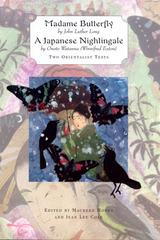
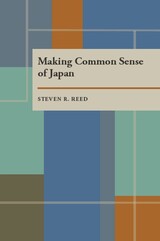
Common misconceptions about Japan begin with the notion that it is a “small” country (it's actually lager than Great Britain, Germany or Italy) and end with pronouncements that the Japanese think differently and have different values-they do things differently because that's the way they are.
Steven Reed takes on the task of demystifying Japanese culture and behavior. Through examples that are familiar to an American audience and his own personal encounters with the Japanese, he argues that the apparent oddity of Japanese behavior flows quite naturally from certain objective conditions that are different from those in the United States.
Mystical allegations about national character are less useful for understanding a foreign culture than a close look at specific situations and conditions. Two aspects of the Japanese economy have particularly baffled Americans: that Japanese workers have “permanent employment” and that the Japanese government cooperates with big business. Reed explains these phenomena in common sense terms. He shows how they developed historically, why they continue, and why they helped produce economic growth. He concludes that these practices are not as different from what happens in the United States as they may appear.

Making History Matter explores the role history and historians played in imperial Japan’s nation and empire building from the 1890s to the 1930s. As ideological architects of this process, leading historians wrote and rewrote narratives that justified the expanding realm. Learning from their Prussian counterparts, they highlighted their empiricist methodology and their scholarly standpoint, to authenticate their perspective and to distinguish themselves from competing discourses. Simultaneously, historians affirmed imperial myths that helped bolster statist authoritarianism domestically and aggressive expansionism abroad. In so doing, they aligned politically with illiberal national leaders who provided funding and other support necessary to nurture the modern discipline of history. By the 1930s, the field was thriving and historians were crucial actors in nationwide commemorations and historical enterprises.
Through a close reading of vast, multilingual sources, with a focus on Kuroita Katsumi, Yoshikawa argues that scholarship and politics were inseparable as Japan’s historical profession developed. In the process of making history matter, historians constructed a national past to counter growing interwar liberalism. This outlook—which continues as the historical perspective that the Liberal Democratic Party leadership embraces—ultimately justified the Japanese aggressions during the Asia-Pacific Wars.
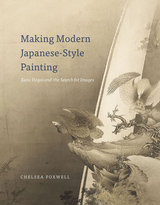
Chelsea Foxwell sheds light on interlinked trends in Japanese nationalist discourse, government art policy, American and European commentary on Japanese art, and the demands of export. The seminal artist Kano Hogai (1828–88) is one telling example: originally a painter for the shogun, his art eventually evolved into novel, eerie images meant to satisfy both Japanese and Western audiences. Rather than simply absorbing Western approaches, nihonga as practiced by Hogai and others broke with pre-Meiji painting even as it worked to neutralize the rupture.
By arguing that fundamental changes to audience expectations led to the emergence of nihonga—a traditional interpretation of Japanese art for a contemporary, international market—Making Modern Japanese-Style Painting offers a fresh look at an important aspect of Japan’s development into a modern nation.

In this history of Japanese involvement in northeast China, the author argues that Japan's military seizure of Manchuria in September 1931 was founded on three decades of infiltration of the area. This incremental empire-building and its effect on Japan are the focuses of this book.
The principal agency in the piecemeal growth of Japanese colonization was the South Manchurian Railway Company, and by the mid-1920s Japan had a deeply entrenched presence in Manchuria and exercised a dominant economic and political influence over the area. Japanese colonial expansion in Manchuria also loomed large in Japanese politics, military policy, economic development, and foreign relations and deeply influenced many aspects of Japan's interwar history.
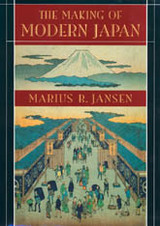
Magisterial in vision, sweeping in scope, this monumental work presents a seamless account of Japanese society during the modern era, from 1600 to the present. A distillation of more than fifty years’ engagement with Japan and its history, it is the crowning work of our leading interpreter of the modern Japanese experience.
Since 1600 Japan has undergone three periods of wrenching social and institutional change, following the imposition of hegemonic order on feudal society by the Tokugawa shogun; the opening of Japan’s ports by Commodore Perry; and defeat in World War II. The Making of Modern Japan charts these changes: the social engineering begun with the founding of the shogunate in 1600, the emergence of village and castle towns with consumer populations, and the diffusion of samurai values in the culture.
Marius Jansen covers the making of the modern state, the adaptation of Western models, growing international trade, the broadening opportunity in Japanese society with industrialization, and the postwar occupation reforms imposed by General MacArthur. Throughout, the book gives voice to the individuals and views that have shaped the actions and beliefs of the Japanese, with writers, artists, and thinkers, as well as political leaders given their due.
The story this book tells, though marked by profound changes, is also one of remarkable consistency, in which continuities outweigh upheavals in the development of society, and successive waves of outside influence have only served to strengthen a sense of what is unique and native to Japanese experience. The Making of Modern Japan takes us to the core of this experience as it illuminates one of the contemporary world’s most compelling transformations.
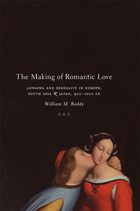

The film star is not simply an actor but a historical phenomenon that derives from the production of an actor's attractiveness, the circulation of his or her name and likeness, and the support of media consumers. This book analyzes the establishment and transformation of the transnational film star system and the formations of historically important film stars—Japanese and non-Japanese—and casts new light on Japanese modernity as it unfolded between the 1910s and 1930s.
Hideaki Fujiki illustrates how film stardom and the star system emerged and evolved, touching on such facets as the production, representation, circulation, and reception of performers' images in films and other media. Examining several individual performers—particularly benshi narrators, Onoe Matsunosuke, Tachibana Teijiro, Kurishima Sumiko, Clara Bow, and Natsukawa Shizue—as well as certain aspects of different star systems that bolstered individual stardom, this study foregrounds the associations of contradictory, multivalent social factors that constituted modernity in Japan, such as industrialization, capitalism, colonialism, nationalism, and consumerism. Through its nuanced treatment of the production and consumption of film stars, this book shows that modernity is not a simple concept, but an intricate, contested, and paradoxical nexus of diverse social elements emerging in their historical contexts.
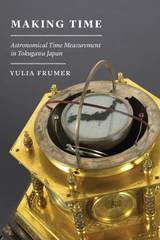
In the mid-sixteenth century, when the first mechanical clocks arrived in Japan from Europe, the Japanese found them interesting but useless, because they failed to display time in units that changed their length with the seasons, as was customary in Japan at the time. In 1873, however, the Japanese government adopted the Western equal-hour system as well as Western clocks. Given that Japan carried out this reform during a period of rapid industrial development, it would be easy to assume that time consciousness is inherent to the equal-hour system and a modern lifestyle, but Making Time suggests that punctuality and time-consciousness are equally possible in a society regulated by a variable-hour system, arguing that this reform occurred because the equal-hour system better reflected a new conception of time — as abstract and universal—which had been developed in Japan by a narrow circle of astronomers, who began seeing time differently as a result of their measurement and calculation practices. Over the course of a few short decades this new way of conceptualizing time spread, gradually becoming the only recognized way of treating time.

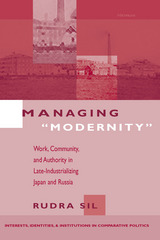
Managing "Modernity" engages a variety of intellectual perspectives in the social sciences. The theoretical approach represents a conscious effort to overcome the contentious debates in political science and sociology among proponents of historical institutionalism, cultural analysis, and rational-choice theory. The substantive argument draws on, and partially integrates, concepts and findings from comparative politics, economic sociology, industrial relations, organization theory, business management, and the political economy of Japan and Russia.
In light of ongoing debates over the significance and impact of "globalization," the eclectic and integrative approach in Managing "Modernity" offers a fresh and provocative contribution that will interest scholars and graduate students across a variety of disciplines and subfields. It offers compelling insights to anyone generally concerned with the social forces that facilitate or hinder the diffusion of ideas and institutions across national boundaries.
Rudra Sil is Janice and Julian Bers Assistant Professor in the Social Sciences, Department of Political Science, University of Pennsylvania.
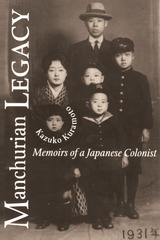
Kazuko Kuramoto was born and raised in Dairen, Manchuria, in 1927, at the peak of Japanese expansionism in Asia. Dairen and the neighboring Port Arthur were important colonial outposts on the Liaotung Peninsula; the train lines established by Russia and taken over by the Japanese, ended there. When Kuramoto's grandfather arrived in Dairen as a member of the Japanese police force shortly after the end of the Russo-Japanese War in 1905, the family's belief in Japanese supremacy and its "divine" mission to "save" Asia from Western imperialists was firmly in place. As a third-generation colonist, the seventeen-year-old Kuramoto readily joined the Red Cross Nurse Corps in 1944 to aid in the war effort and in her country's sacred cause. A year later, her family listened to the emperor's radio broadcast ". . . we shall have to endure the unendurable, to suffer the insufferable." Japan surrendered unconditionally.
Manchurian Legacy is the story of the family's life in Dairen, their survival as a forgotten people during the battle to reclaim Manchuria waged by Russia, Nationalist China, and Communist China, and their subsequent repatriation to a devastated Japan. Kuramoto describes a culture based on the unthinking oppression of the colonized by the colonizer. And, because Manchuria was, in essence, a Japanese frontier, her family lived a freer and more luxurious life than they would have in Japan—one relatively unscathed by the war until after the surrender.
As a commentator Kuramoto explores her culture both from the inside, subjectively, and from the outside, objectively. Her memoirs describe her coming of age in a colonial society, her family's experiences in war-torn Manchuria, and her "homecoming" to Japan—where she had never been—just as Japan is engaged in its own cultural upheaval.

Manga from the Floating World is the first full-length study in English of the kibyôshi, a genre of sophisticated pictorial fiction widely read in late-eighteenth-century Japan. By combining analysis of the socioeconomic and historical milieus in which the genre was produced and consumed with three annotated translations of works by major author-artist Santô Kyôden (1761-1816) that closely reproduce the experience of encountering the originals, Adam Kern offers a sustained close reading of the vibrant popular imagination of the mid-Edo period. The kibyôshi, Kern argues, became an influential form of political satire that seemed poised to transform the uniquely Edoesque brand of urban commoner culture into something more, perhaps even a national culture, until the shogunal government intervened.
Based on extensive research using primary sources in their original Edo editions, the volume is copiously illustrated with rare prints from Japanese archival collections. It serves as an introduction not only to the kibyôshi but also to the genre's readers and critics, narratological conventions, modes of visuality, format, and relationship to the modern Japanese comicbook (manga) and to the popular literature and wit of Edo. Filled with graphic puns and caricatures, these entertaining works will appeal to the general reader as well as to the more experienced student of Japanese cultural history.

Manga from the Floating World is the first full-length study in English of the kibyōshi, a genre of woodblock-printed comic book widely read in late-eighteenth-century Japan. By combining analysis of the socioeconomic and historical milieus in which the genre was produced and consumed with three annotated translations of works by major author-artist Santō Kyōden (1761–1816) that closely reproduce the experience of encountering the originals, Adam Kern offers a sustained close reading of the vibrant popular imagination of the mid-Edo period. The kibyōshi, Kern argues, became an influential form of political satire that seemed poised to transform the uniquely Edoesque brand of urban commoner culture into something more, perhaps even a national culture, until the shogunal government intervened.
Based on extensive research using primary sources in their original Edo editions, the volume is copiously illustrated with rare prints from Japanese archival collections. It serves as an introduction not only to the kibyōshi but also to the genre’s readers and critics, narratological conventions, modes of visuality, format, and relationship to the modern Japanese manga and to the popular literature and wit of Edo. Filled with graphic puns and caricatures, these entertaining works will appeal to the general reader as well as to the more experienced student of Japanese cultural history—and anyone interested in the global history of comics, graphic novels, and manga.
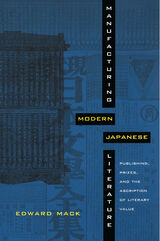
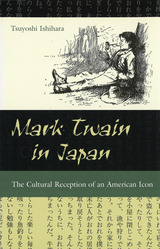
Best known for his sharp wit and his portrayals of life along the banks of the Mississippi River, Mark Twain is indeed an American icon, and many scholars have examined how he and his work are perceived in the United States. In Mark Twain in Japan, however, Tsuyoshi Ishihara explores how Twain’s uniquely American work is viewed in a completely different culture.

Meanings of Antiquity is the first dedicated study of how the oldest Japanese myths, recorded in the eighth-century texts Kojiki and Nihon shoki, changed in meaning and significance between 800 and 1800 CE. Generations of Japanese scholars and students have turned to these two texts and their creation myths to understand what it means to be Japanese and where Japan fits into the world order.
As the shape and scale of the world explained by these myths changed, these myths evolved in turn. Over the course of the millennium covered in this study, Japan transforms from the center of a proud empire to a millet seed at the edge of the Buddhist world, from the last vestige of China’s glorious Zhou Dynasty to an archipelago on a spherical globe. Analyzing historical records, poetry, fiction, religious writings, military epics, political treatises, and textual commentary, Matthieu Felt identifies the geographical, cosmological, epistemological, and semiotic changes that led to new adaptations of Japanese myths. Felt demonstrates that the meanings of Japanese antiquity and of Japan’s most ancient texts were—and are—a work in progress, a collective effort of writers and thinkers over the past 1,300 years.
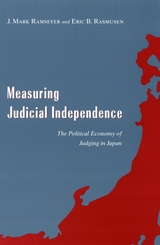
The Japanese Constitution, like many others, requires that all judges be "independent in the exercise of their conscience and bound only by this Constitution and its laws." Consistent with this requirement, Japanese courts have long enjoyed a reputation for vigilant independence—an idea challenged only occasionally, and most often anecdotally. But in this book, J. Mark Ramseyer and Eric B. Rasmusen use the latest statistical techniques to examine whether that reputation always holds up to scrutiny—whether, and to what extent, the careers of lower court judges can be manipulated to political advantage.
On the basis of careful econometric analysis of career data for hundreds of judges, Ramseyer and Rasmusen find that Japanese politics do influence judicial careers, discreetly and indirectly: judges who decide politically charged cases in ways favored by the ruling party enjoy better careers after their decisions than might otherwise be expected, while dissenting judges are more likely to find their careers hampered by assignments to less desirable positions.
Ramseyer and Rasmusen's sophisticated yet accessible analysis has much to offer anyone interested in either judicial independence or the application of econometric techniques in the social sciences.
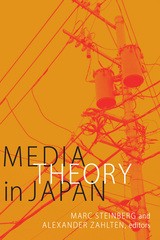

This book is about the “losers” of the Meiji Restoration and the supporters who promoted their legacy. Although the violence of the Meiji Restoration is typically downplayed, the trauma was real, and those who felt marginalized from the mainstream throughout modern Japan looked to these losers as models of action.
Using a wide range of sources, from essays by former Tokugawa supporters like Fukuzawa Yukichi to postwar film and “lost decade” manga, Michael Wert traces the shifting portrayals of Restoration losers. By highlighting the overlooked sites of memory such as legends about buried gold, the awarding of posthumous court rank, or fighting over a disembodied head, Wert illustrates how the process of commemoration and rehabilitation allows individuals a voice in the formation of national history. He argues that the commingling of local memory activists and nationally-known politicians, academics, writers, and treasure hunters formed interconnecting memory landscapes that promoted local figures as potential heroes in modern Japan.

This book is about the “losers” of the Meiji Restoration and the supporters who promoted their legacy. Although the violence of the Meiji Restoration is typically downplayed, the trauma was real, and those who felt marginalized from the mainstream throughout modern Japan looked to these losers as models of action.
Using a wide range of sources, from essays by former Tokugawa supporters like Fukuzawa Yukichi to postwar film and “lost decade” manga, Michael Wert traces the shifting portrayals of Restoration losers. By highlighting the overlooked sites of memory such as legends about buried gold, the awarding of posthumous court rank, or fighting over a disembodied head, Wert illustrates how the process of commemoration and rehabilitation allows individuals a voice in the formation of national history. He argues that the commingling of local memory activists and nationally-known politicians, academics, writers, and treasure hunters formed interconnecting memory landscapes that promoted local figures as potential heroes in modern Japan.

Credit for the swift unification of Japan following the 1868 overthrow of the Tokugawa shogunate is usually given to the national leaders who instigated the coup and formed the new Meiji government. But is brilliant leadership at the top sufficient to explain how regional separatist tendencies and loyalties to the old lords were overcome in the formation of a nationally unified state? On the contrary, argues James C. Baxter. Though plans were drawn up by policy makers in Tokyo, the efforts of citizens all over the country were required to implement these plans and create a sense of national identity among local populations.
Drawing on extensive archival resources, Baxter describes the transformation of the Tokugawa domain of Kaga into the Meiji prefecture of Ishikawa. The result is a richly detailed study that helps explain how Japan achieved national unity without the bloody struggles that have often accompanied modernization and nation-building.

The Meiroku Zasshi is recognized as the single most important source for thought during the Japanese enlightenment that followed the Mei Restoration of 1868. The men who wrote for the Meiroku Zasshi (Meiroku refers to the sixth year of Meiji, that is, 1873, and zasshi means magazine) were the encyclopedists of the Meiji enlightenment. Trained as Western experts during the reopening of the country after 1853, they introduced mid-nineteenth-century European and American culture to Japan. The forty-three issues of the magazine represent a broad sampling of the way in which this culture was presented. The influence of the Meiroku Zasshi on the nation builders of Meiji Japan was second to that of the writings of the great enlightener, Fukuzawa Yukichi. This crucial work in Japanese cultural history is now accessible to readers in a precise, beautifully rendered translation by William R. Braisted.
In the magazine’s pages, the Meirokusha writers expressed their views on such concerns of the period as a popularly elected assembly, the separation of church and state, the status of women, economic policy, chemistry, language reform, and the nature of knowledge. Their prose style reflected their modernity—terse, dignified, less artificial than the traditional literary modes. They also translated articles from languages other than Dutch (until that time the only Western language known to Japanese scholars).
Nowhere else can one find gathered together such representative writings by the leading intellectuals of the day, many of them former samurai, who fused their country’s tradition of practical studies with the humane and useful knowledge of the West. Complete with Braisted’s highly informative introduction, this full translation of the Meiroku Zasshi suggests why Japan’s modern experience has been unique.
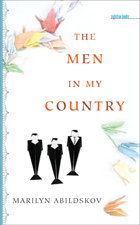
The Men in My Country is the story of an American woman living and loving in Japan. Satisfied at first to observe her exotic surroundings, the woman falls in love with the place, with the light, with the curve of a river, with the smell of bonfires during obon, with blue and white porcelain dishes, with pencil boxes, and with small origami birds. Later, struggling for a deeper connection—“I wanted the country under my skin”—Abildskov meets the three men who will be part of her transformation and the one man with whom she will fall deeply in love.
A travel memoir offering an artful depiction of a very real place, The Men in My Country also covers the terrain of a complex emotional journey, tracing a geography of the heart, showing how we move to be moved, how in losing ourselves in a foreign place we can become dangerously—and gloriously—undone.
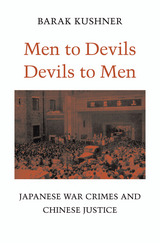
The Japanese Army committed numerous atrocities during its pitiless campaigns in China from 1931 to 1945. When the Chinese emerged victorious with the Allies at the end of World War II, many seemed ready to exact retribution for these crimes. Rather than resort to violence, however, they chose to deal with their former enemy through legal and diplomatic means. Focusing on the trials of, and policies toward, Japanese war criminals in the postwar period, Men to Devils, Devils to Men analyzes the complex political maneuvering between China and Japan that shaped East Asian realpolitik during the Cold War.
Barak Kushner examines how factions of Nationalists and Communists within China structured the war crimes trials in ways meant to strengthen their competing claims to political rule. On the international stage, both China and Japan propagandized the tribunals, promoting or blocking them for their own advantage. Both nations vied to prove their justness to the world: competing groups in China by emphasizing their magnanimous policy toward the Japanese; Japan by openly cooperating with postwar democratization initiatives. At home, however, Japan allowed the legitimacy of the war crimes trials to be questioned in intense debates that became a formidable force in postwar Japanese politics.
In uncovering the different ways the pursuit of justice for Japanese war crimes influenced Sino-Japanese relations in the postwar years, Men to Devils, Devils to Men reveals a Cold War dynamic that still roils East Asian relations today.


Nearly forty years after the outbreak of the “Minamata Disease,” it remains one of the most horrific examples of environmental poisoning. Based on primary documents and interviews, this book describes three rounds of responses to this incidence of mercury poisoning, focusing on the efforts of its victims and their supporters, particularly the activities of grassroots movements and popular campaigns, to secure redress.
Timothy S. George argues that Japan’s postwar democracy is ad hoc, fragile, and dependent on definition through citizen action and that the redress effort is exemplary of the great changes in the second and third postwar decades that redefined democracy in Japan.
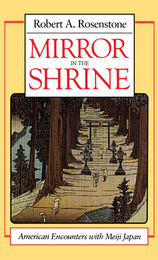
In the last third of the nineteenth century, three Americans with diverse purposes sailed to Japan—the missionary William Elliot Griffis, the scientist Edward S. Morse, and the writer Lafcadio Hearn. They were to become part of the first generation of American experts on Japan, regularly quoted and widely read. More significantly, their own lives were vastly changed, broadened and enriched in unexpected ways, so that their thoughts dwelt as much on what Americans could learn from the pagan Japanese as on what Americans could teach them.
In telling these stories, Robert Rosenstone evokes the immediacy of daily experience in Meiji Japan, a nation still feudal in many of its habits yet captivating to Westerners for the gentleness of the people, the beauty of the landscape, the human scale of the unspoiled old towns, and the charm of arts and manners. He describes the odyssey of the ambitious and strong-minded Christian minister Griffis, who won few converts but, as a teacher, assisted at the birth of modern Japan. He portrays the natural scientist Morse, a born collector who turned from amassing mollusks to assembling comprehensive collections of Japanese folk art and pottery. He recounts Lafcadio Hearn’s fourteen years in Japan. Hearn, who married a Japanese, became a citizen, and found in his new homeland ideal subject matter for exotic tales of ghosts, demons, spectral lovers, local gods and heroes, spells, enchantments.
Rosenstone recreates the sights and textures of Meiji Japan, but Mirror in the Shrine brings to the reader much more than a traditional rendering. Rather, through the use of some of the techniques of modernist writing, the book provides a multi-voiced narrative in which the words of the present and the past interact to present a fresh view of historical reality. While charting the common stages of these three Americans’ acculturation—growing to like the food, the architecture, the spareness, the mysterious etiquette—the work also highlights the challenges that Japan issues to American culture, in this century as well as in the last: Is it possible to find human fulfillment within the confines of a hierarchical, even repressive, social order? Is it possible for our culture to find a place of importance for such qualities as harmony, aesthetics, morals, manners?
This is a book for anyone who is at all interested in Japan or in the meeting of East and West. The “old Japan hand” will reexperience the freshness of an early love; the newcomer will find it equally evocative and fascinating.

At a telling moment in the development of American East Asia policy, the dream of a Christian China, made vivid by the utterances of returned missionaries, fired the imagination of the general public, influenced opinion leaders and policymakers, and furthered the Open Door doctrine. Missionary-inspired enthusiasm for China ran parallel to the different attitude of the American business community, which viewed Japan as the more appropriate focus of American interest in East Asia.
During the five years here examined, the religious mentality proved stronger than the commercial mentality in influencing American policy toward the Chinese Republican Revolution and the Twenty-One Demands of 1915. James Reed’s treatment of the struggle between William Jennings Bryan and Robert Lansing over the Japanese demands in China is detailed and penetrating.
This book builds on the work of Akira Iriye, Michael Hunt, Ernest May, and others in its analysis of cultural attitudes, business affairs, and the mindset of the foreign policy elites. Its thesis—that the Protestant missionary movement profoundly shaped the course of our historical relations with East Asia—will interest both specialists and general readers.
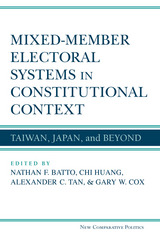
The findings presented here demonstrate that the success of electoral reform depends not only on the specification of new electoral rules per se but also on the political context—and especially the constitutional framework—within which such rules are embedded.

This book examines, in rigorous, quantitative detail, the structure of trade between Japan and the United States, tracing the evolution of trade interdependence and the causes of its increasing intensity. It also looks at sectoral differences in interdependence—at the patterns behind changes in the composition of trade and the complex factors that determine how individual sectors of each economy respond to economic change in all the others.
In the first part, the author designs and estimates a multicountry, multisectoral general equilibrium model. The model is operationalized with careful estimates of the parameters that govern demand, production, and trade in both economies. In the second part, the model is employed to explore various aspects of interdependence and commercial policy. Peter Petri's findings indicate, among other things, that the American and Japanese economies are more closely related than one might judge from the size of their trade. As a result of differences in the structures of the two economies, their interdependence is sharply asymmetric, with economic events in the United States having a greater impact on Japan than vice versa. The study also shows that the roots of bilateral conflict can be traced to structural causes, and suggests that recent structural changes may have increased the incentives for protectionism.

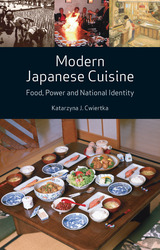
Katarzyna J. Cwiertka demonstrates that key shifts in the Japanese diet were, in many cases, a consequence of modern imperialism. Exploring reforms in military catering and home cooking, wartime food management and the rise of urban gastronomy, Cwiertka shows how Japan’s numerous regional cuisines were eventually replaced by a set of foods and practices with which the majority of Japanese today ardently identify.
The result of over a decade of research, Modern Japanese Cuisine is a fascinating look at the historical roots of some of the world’s best cooking and will provide appetizing reading for scholars of Japanese culture and foodies alike.

Money and finance have been among the most potent tools of colonial power. This study investigates the Japanese experiment with financial imperialism—or “yen diplomacy”—at several key moments between the acquisition of Taiwan in 1895 and the outbreak of the Sino–Japanese War in 1937. Through authoritarian monetary reforms and lending schemes, government officials and financial middlemen served as “money doctors” who steered capital and expertise to Japanese official and semi-official colonies in Taiwan, Korea, China, and Manchuria.
Michael Schiltz points to the paradox of acute capital shortages within the Japan’s domestic economy and aggressive capital exports to its colonial possessions as the inevitable but ultimately disastrous outcome of the Japanese government’s goal to exercise macroeconomic control over greater East Asia and establish a self-sufficient “yen bloc.” Through their efforts to implement their policies and contribute to the expansion of the Japanese empire, the “money doctors” brought to the colonies a series of banking institutions and a corollary capitalist ethos, which would all have a formidable impact on the development of the receiving countries, eventually affecting their geopolitical position in the postcolonial world.
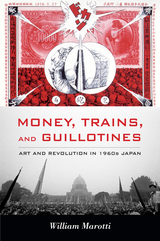

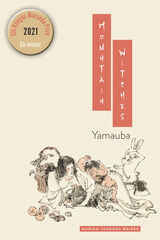
Situating the yamauba within the construct of yōkai and archetypes, Noriko T. Reider investigates the yamauba attributes through the examination of narratives including folktales, literary works, legends, modern fiction, manga, and anime. She traces the lineage of a yamauba image from the seventh-century text Kojiki to the streets of Shibuya, Tokyo, and explores its emergence as well as its various, often conflicting, characteristics. Reider also examines the adaptation and re-creation of the prototype in diverse media such as modern fiction, film, manga, anime, and fashion in relation to the changing status of women in Japanese society.
Offering a comprehensive overview of the development of the yamauba as a literary and mythic trope, Mountain Witches is a study of an archetype that endures in Japanese media and folklore. It will be valuable to students, scholars, and the general reader interested in folklore, Japanese literature, demonology, history, anthropology, cultural studies, gender studies, and the visual and performing arts.
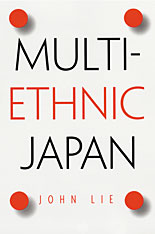
Multiethnic Japan challenges the received view of Japanese society as ethnically homogeneous. Employing a wide array of arguments and evidence--historical and comparative, interviews and observations, high literature and popular culture--John Lie recasts modern Japan as a thoroughly multiethnic society.
Lie casts light on a wide range of minority groups in modern Japanese society, including the Ainu, Burakumin (descendants of premodern outcasts), Chinese, Koreans, and Okinawans. In so doing, he depicts the trajectory of modern Japanese identity.
Surprisingly, Lie argues that the belief in a monoethnic Japan is a post–World War II phenomenon, and he explores the formation of the monoethnic ideology. He also makes a general argument about the nature of national identity, delving into the mechanisms of social classification, signification, and identification.
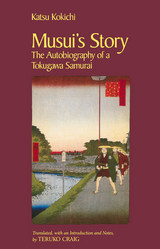
From childhood, Katsu was given to mischief. He ran away from home, once at thirteen, making his way as a beggar on the great trunk road between Edo and Kyoto, and again at twenty, posing as the emissary of a feudal lord. He eventually married and had children but never obtained official preferment and was forced to supplement a meager stipend by dealing in swords, selling protection to shopkeepers, and generally using his muscle and wits.
Katsu's descriptions of loyalty and kindness, greed and deception, vanity and superstition offer an intimate view of daily life in nineteenth-century Japan unavailable in standard history books. Musui's Story will delight not only students of Japan's past but also general readers who will be entranced by Katsu's candor and boundless zest for life.

Images play a fundamental role in relations among peoples. American and Japanese scholars have been among the foremost students of images in international and intercultural relations. Building on the historiographical achievements in the two countries, these essays aim further to explore aspects of Japanese-American mutual perceptions.
The contributors to this volume provide pieces of a puzzle, authentic but partial elements of a total picture. They examine the sources, ranges, uses (and misuses), and constituencies of images. They propose various ways of studying this extremely elusive subject and show how an examination of American-Japanese perception can contribute to a better understanding of Japanese history and American history. We see instances of misperceptions and misunderstandings, but also a streak of open-mindedness and flexibility in both Japan and the United States.
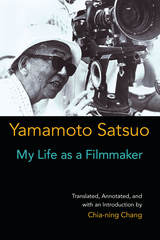
In addition to detailed annotations of the autobiography, translator Chia-ning Chang offers a comprehensive introduction to the career and the significance of Yamamoto and his works in the context of Japanese film history. It contextualizes Yamamoto’s life and works in the historical and cultural zeitgeist of prewar, wartime, and postwar Japan before scrutinizing the unique qualities of his narrative voice and social conscience as a film artist.

READERS
Browse our collection.
PUBLISHERS
See BiblioVault's publisher services.
STUDENT SERVICES
Files for college accessibility offices.
UChicago Accessibility Resources
home | accessibility | search | about | contact us
BiblioVault ® 2001 - 2024
The University of Chicago Press









